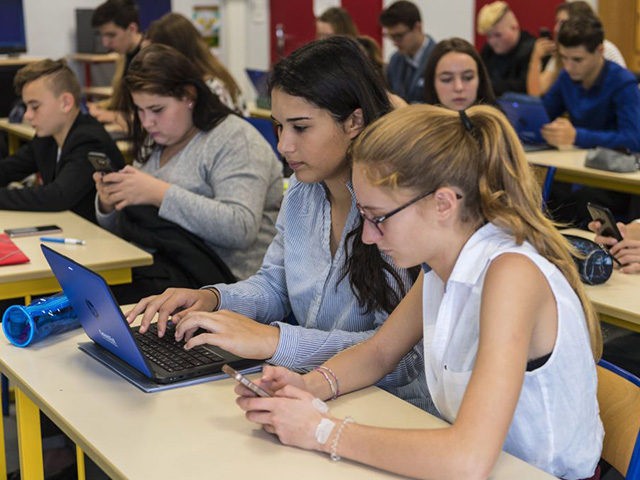School districts across the country are being urged to prepare for online learning should the respiratory infection caused by the novel coronavirus continue to spread, yet many have yet to address prolonged distance learning.
On Saturday, the Elk Grove Unified School District, with 64,000 students, announced it would be closing all of the district’s schools after learning a family in the district had been exposed to the virus.
Dr. Peter Beilenson, who heads the Sacramento County Health Department, told the Sacramento Bee Saturday he “respects” the Elk Grove decision, but urged schools to discuss the possibility of closure with local health officials prior to making the decision.
“If two or three students come down with cases, we probably will recommend closing the school,” Beilenson said.
School closures have also been announced in the states of Washington and Nebraska, and in Chicago and New York City.
Education Week reports that while the Centers for Disease Control and Prevention (CDC) has recommended school districts consider online learning to ensure continuity of education should a school district experience a closure, not all districts are prepared for that level of technology.
Not all K-12 school districts have distributed tablets or personal digital devices to students, and those in rural or low-income areas may not have access to the Internet.
“Our school district would not be able to sustain in a meaningful way substantive teaching in the content area on a platform like teleteaching,” said Sal Pascarella, Danbury, Connecticut, superintendent, according to Education Week.
Pascarella’s district has 12,000 students, with 52 percent eligible for free and reduced-price lunch. He added his district has been faced with a substantial increase in English-language learners, necessitating bilingual lessons.
“The teachers start looking at learning that they want to reinforce or extend their work, but not what I would call moving the curriculum forward, just reinforcing,” he said.
Keith Krueger, the CEO of CoSN, a nonprofit membership organization for K-12 tech leaders, also told Education Week school districts who have never prepared for online learning “are not likely to be able to turn on a dime and do this.”
Krueger said school districts should think outside the box.
“I would definitely call in the virtual learning experts in your community, in your school district, to think through what are the things that you’re already doing that will work, what do you need to beef up in terms of training,” he said.
CDC has urged school districts to “ensure continuity of education” should the spread of COVID-19, the respiratory infection caused by the novel coronavirus, lead to continued school closures.
“Implement e-learning plans, including digital and distance learning options as feasible and appropriate,” CDC said in a recent guidance aimed at K-12 school administrators.
The guidance added:
Determine, in consultation with school district officials or other relevant state or local partners:
- If a waiver is needed for state requirements of a minimum number of in-person instructional hours or school days (seat time) as a condition for funding;
- How to convert face-to-face lessons into online lessons and how to train teachers to do so;
- How to triage technical issues if faced with limited IT support and staff;
- How to encourage appropriate adult supervision while children are using distance learning approaches; and
- How to deal with the potential lack of students’ access to computers and the Internet at home.
Kevin Schwartz, the chief technology officer of the Austin Independent School District, in Texas, told Education Week the biggest challenge is how to envision learning in a different way.
“Because you’re not going to get 25 kids together in a room and teach them,” he said. “It’s going to be different. It’s rethinking the approach, not just from a tools perspective, but from a pedagogy perspective.”

COMMENTS
Please let us know if you're having issues with commenting.